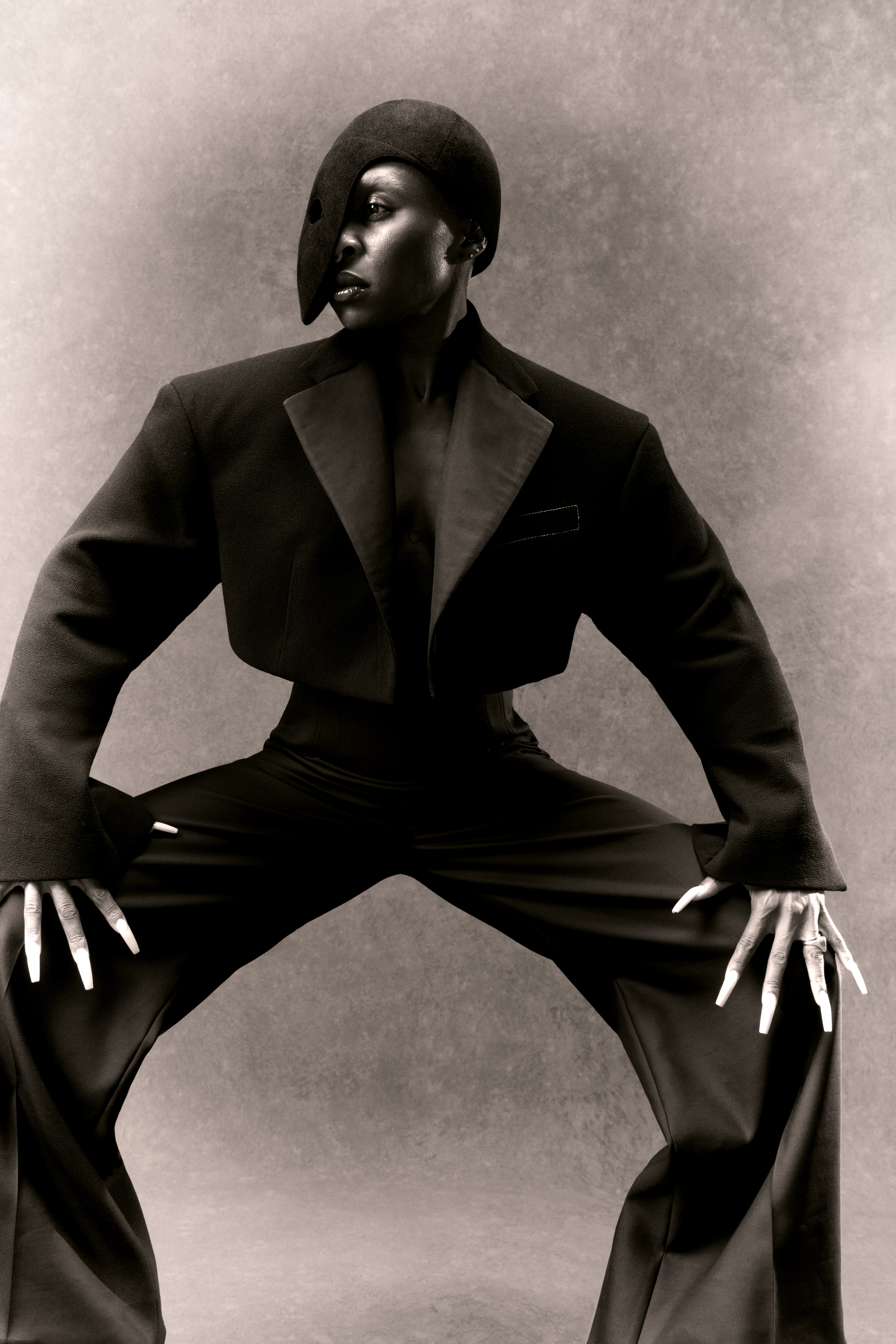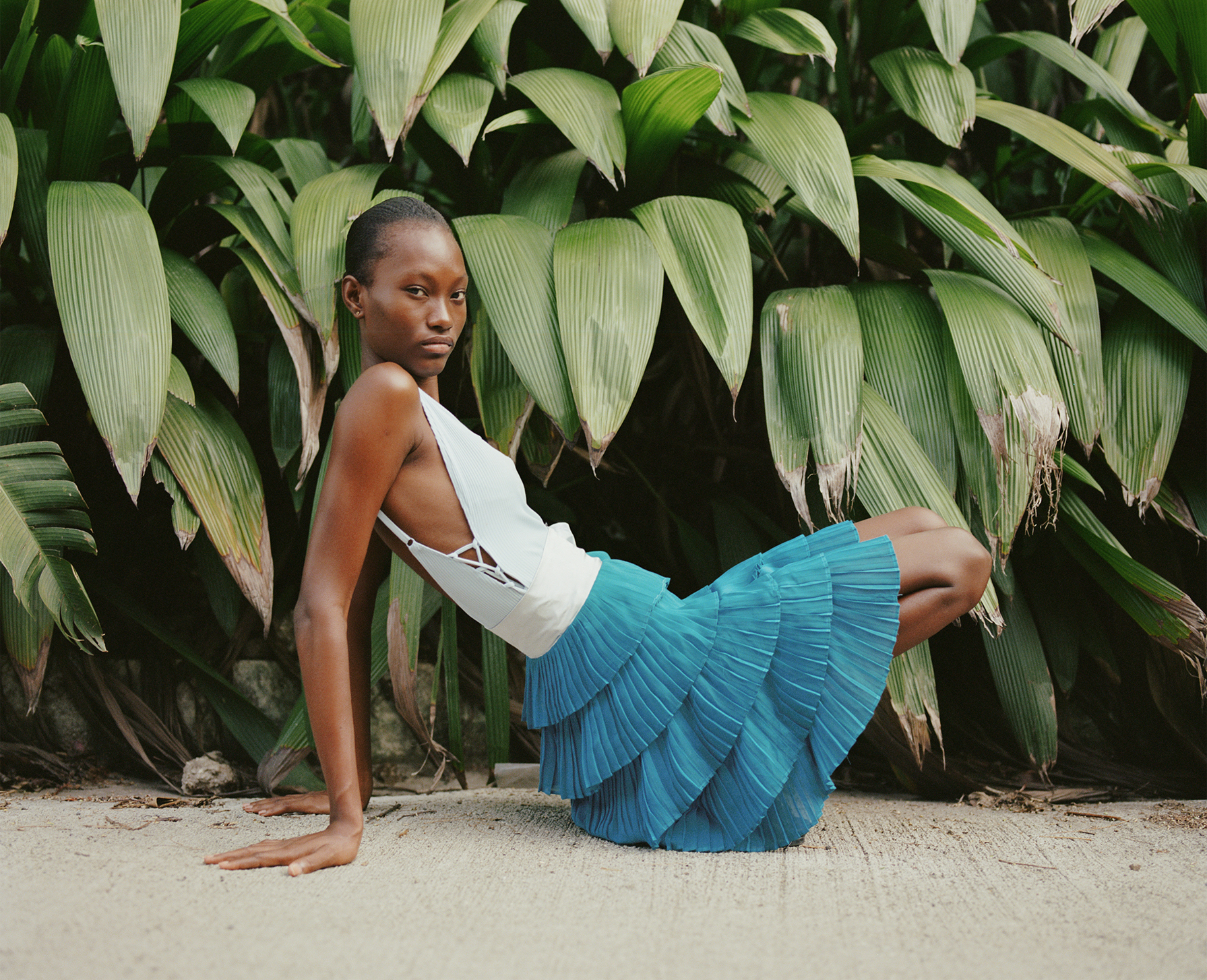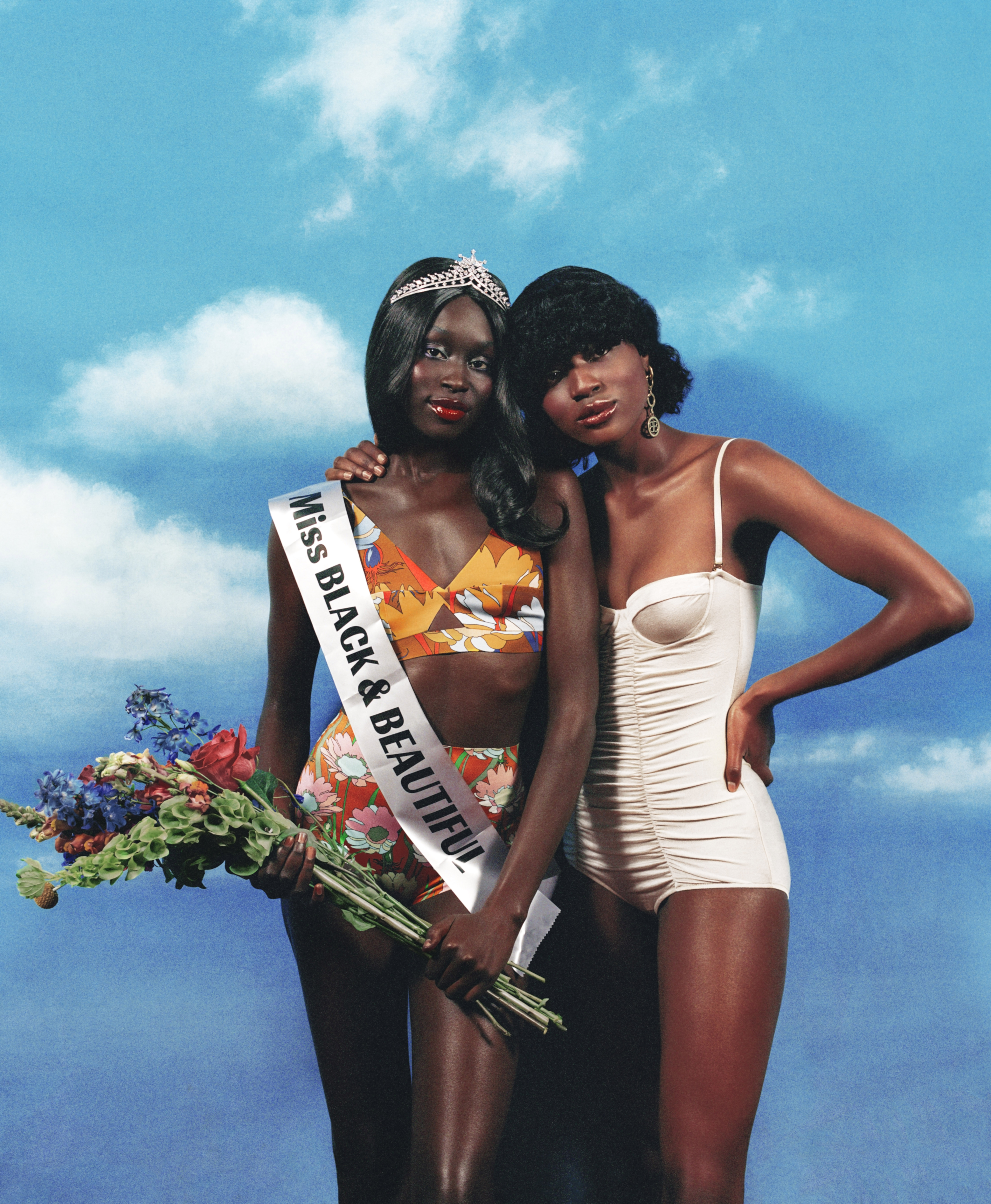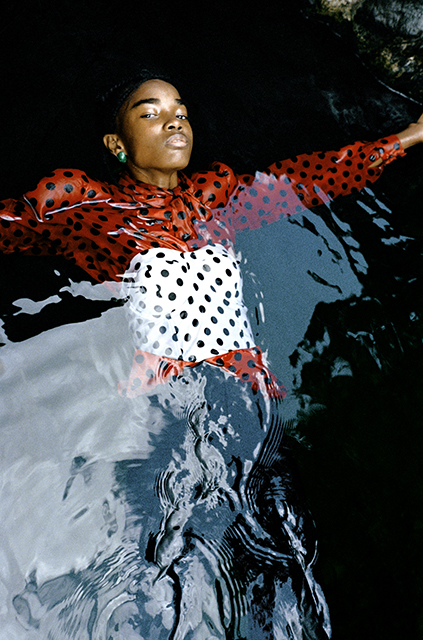What started off as a mere hobby at age 13, shooting self-portraits and glamorous shots of friends inspired by Tumblr muses in her local neighborhood, turned into a full-blown profession for London based photographer, Amber Pinkerton. Pinkerton recalls seeing a perfume ad for ‘Romance by Ralph Lauren’ that pushed her into studying photography seriously. When she moved to London from Jamaica, Pinkerton began to deep dive into how race and nationality played into not only her life but Black people’s everyday experiences in Westernized societies. It fueled her interest in communicating those subtle nuances through photography by confronting and celebrating these objectives from the viewer’s perspective. “Maneuvering in the industry is definitely still a task, but I think I’ve developed a strong spirit and concrete self-respect,” declares Pinkerton. Models.com spoke to the rising photographer about experimenting with different mediums, letting go of self-imposed barriers, and her goals going into 2022.

Image courtesy of Amber Pinkerton
What inspired your initial interest in photography?
My initial interest in photography was definitely influenced by my Facebook friends when I was around 13, who all had photography groups and pages at the time. I also had some absolute Tumblr muses, who took very cool self-portraits, and I guess I wanted to try recreating my image in a similar way. I started taking very fashionable, glamorous, and eccentric photographs of myself with a timer multiple times a week for Tumblr & Facebook — it was my dedicated, teenage hobby. Eventually, I started turning the lens away from myself, styling my friends in my parents’ clothes and I’d photograph them at my house or in my local neighborhood. This was also like a weekly ritual! But, I do remember a distinctive moment when it transitioned from a hobby to my actual ambition, which was when I saw the perfume ad ‘Romance by Ralph Lauren’.
How did social media play a role in showcasing your work when you just started off?
Social media played a huge role in the early days of my photography because it helped build a sort of primary and local fan base back home. Back then, I was an extreme social butterfly and had an insane number of Facebook friends (approaching 3,000+). At the time my images would’ve been seen as really strange, but most people enjoyed them and that’s how I developed a photography page following. It was an ideal digital environment to experiment in at the time. Digital society certainly did not have the same sense of validation or fear of making mistakes (as it is now with Instagram).

Image courtesy of Amber Pinkerton
How has your identity influenced your gaze as a photographer?
My identity really came into full form when I moved to London, with my nationality and race seeming to suddenly move to the forefront— it struck a cord much later than for the average person growing up in westernized societies. I began observing how colour and class have been shaping and affecting the everyday lives of Black or darker-skinned people locally and abroad, and that was surely the turning point of my work. I became much more conscious and deliberate in the photographs I produced. I also had to point the finger back at myself and re-evaluate what my first body of work may have been communicating. This is when I truly began to understand photographic communication.
What drives you creatively?
I’m driven creatively by just about anything, really. I take inspiration from installation art, paintings, sculptures, film, music, news, literature. I’m really interested in the materiality of the photograph— I now perceive it as more of an object, so factoring in other genres of art is a crucial element of the process. Fine art and documentary photography influences my process more than ever since studying photography. I’ve developed a passionate love for research; I’m literally always researching! It pushes me to try new things. I don’t feel as if I need to have a set visual identity, at least not at this stage. Experimenting can also lead to finding a solid style or discovering new techniques/ways of working I may prefer. I never try to repeat the same thing— I love to constantly mix everything around, or I get bored very easily.

Image courtesy of Amber Pinkerton
What mediums do you usually like to incorporate into your work?
I’ve recently developed an obsession with alternative processes such as screen printing, polymer printing, and cyanotypes. I love these processes because they allow versatility. Since experimenting with materiality, I’ve incorporated glass, tiles, wood, ink, and paint to name a few, but have only just gotten started, so no fixed patterns just yet!
As a Black woman, how has your overall experience been maneuvering in the fashion industry?
In the beginning, I found it to be really difficult. You’re often undermined or seen as incompetent, which still happens even at my current level, but I am sure I’ve surprised a lot of people along the journey. There was always a need to prove others wrong, but eventually, I had to dismiss my own barriers as focusing on them too much can sometimes be unhelpful. Now I just see it as doing my job, but it is surely important to take note of how people make you feel— the on-set experience is pivotal for me because it influences my connection to the images. If I’ve had a horrible experience, I can hardly identify with the images. I’m personally unable to tolerate this ancient tradition in fashion where people are allowed to treat you with little respect. I don’t find that behavior acceptable at all. Maneuvering in the industry is definitely still a task, but I think I’ve developed a strong spirit and concrete self-respect. I do though, feel there is a lot of elitism and people seem to value popularity and labels over genuine talent.

Image courtesy of Amber Pinkerton
You’ve mentioned how your work is often stimulated by socio-political climates. What do you want your images to reflect for viewers?
Every project I do has a different goal, but I often keep these aims in mind: to incite, to engage, to inform, to confront, to uplift, to provoke, to celebrate. I like to explore these objectives.
You were recently selected for the Bold Black British exhibition held at Christie’s. How did it feel to be honored for your work in the British art scene?
Being represented by a gallery has been super exciting. It allows me to consider my work in a new context and space from the moment of its creation. I’m extremely happy to have been included— especially among artists like JAMES BARNOR! It was a very special feeling.

Image courtesy of Amber Pinkerton
What has been your most memorable shoot?
Definitely shooting the Alexis Bittar FW21 campaign. I think it was so memorable because I had a very positive and welcoming experience— the best one yet. The nature of what I do requires constantly working with different crews, and they made me feel so comfortable! They were casual, fun, and full of good vibes! Really loved that team.
As the year wraps up, what are some of your goals going into 2022?
I hope to have my first solo exhibition, publish a photobook/zine, create a film I’m proud of and have my own studio (if time allows it all)!

